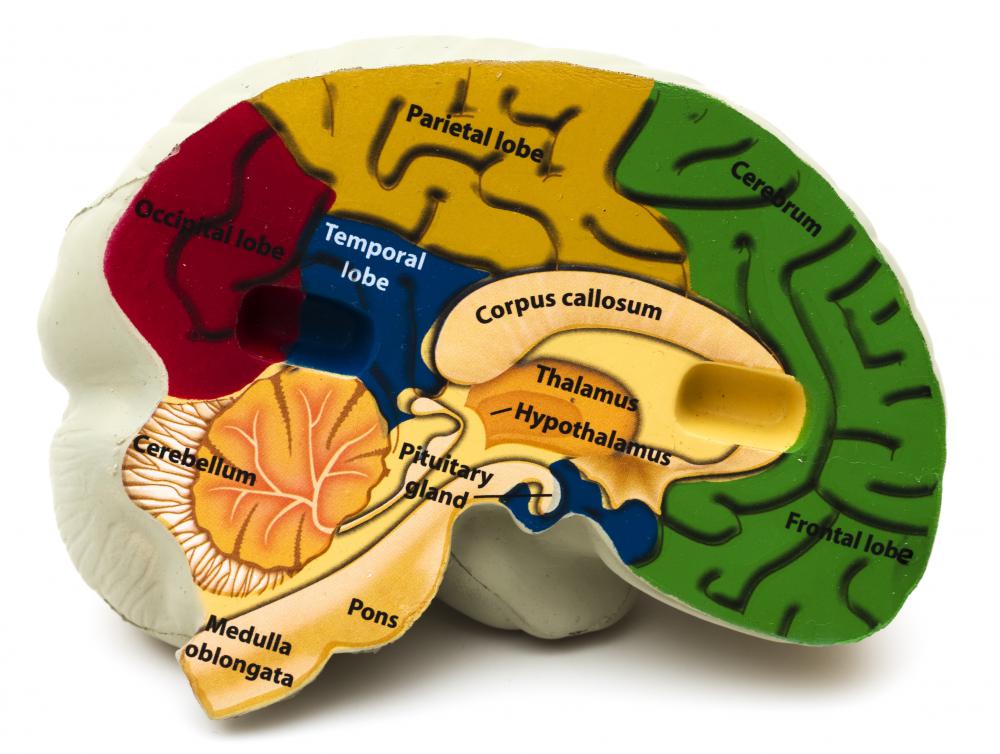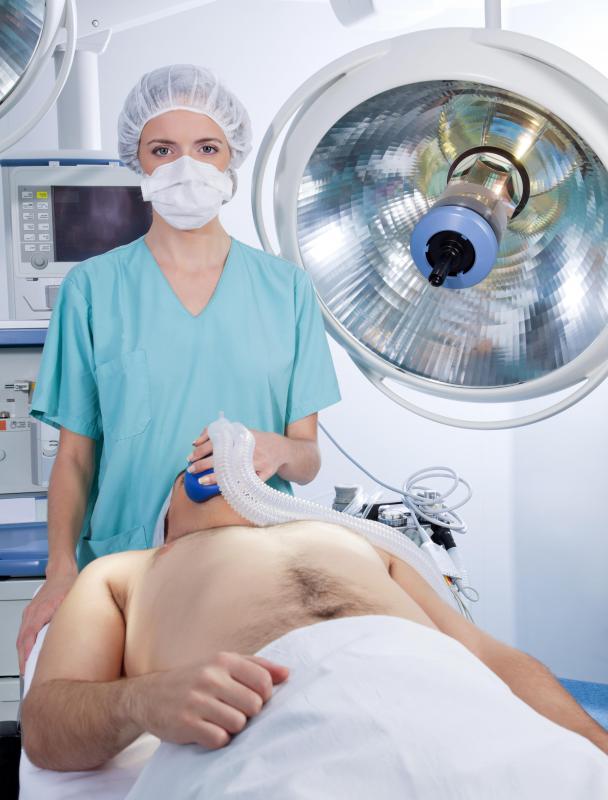At WiseGEEK, we're committed to delivering accurate, trustworthy information. Our expert-authored content is rigorously fact-checked and sourced from credible authorities. Discover how we uphold the highest standards in providing you with reliable knowledge.
What is a Corpus Callosotomy?
Corpus callosotomy is a surgical procedure done on the brain of a patient suffering from seizures caused by epilepsy. The corpus callosum is a white band of fibers that connect the left and right hemispheres of the brain. Electrical impulses travel back and forth through the corpus callosum to reach each side of the brain. When abnormal impulses lead to a seizure, the seizure can cross the corpus callosum and involve the entire brain.
During the partial corpus callosotomy procedure, a neurosurgeon will sever the anterior two-thirds of the fibers of the corpus callosum. The posterior one-third is left intact and there is no removal of brain tissue. Severing the anterior region disrupts the communication between the two halves of the brain and this usually leads to a significant reduction in the number of seizures experienced by the patient.

The corpus callosotomy is usually done on patients who are unable to control their seizures with medication. Before scheduling the surgery, the physician must take a complete history of the patient’s seizures, along with what medications have been tried. The patient must also undergo a magnetic resonance imaging (MRI) so the neurosurgeon can have a complete view of the brain. An electroencephalogram (EEG), in which electrodes are attached to the skull, is done to try to locate the source of the seizures. Neuropsychological testing is also done to determine which areas of the brain control motor skills such as language, speech, and writing.

After the testing is complete, the surgeon will schedule the patient for surgery. The surgery is done while the patient is under general anesthesia. An incision is made in the top of the skull and a piece of bone is removed to expose the area of the brain between the two hemispheres. Both hemispheres are gently pulled apart and the corpus callosum is cut lengthwise. The bone is replaced over the brain and the incision is closed.

The patient will probably have a one-week stay in the hospital followed by several weeks of recovery at home. During that time the patient should avoid any strenuous activities or heavy lifting. Anti-seizure medication may still be necessary but the number and severity of seizures should be greatly reduced. The partial corpus callosotomy has been most successful on patients suffering from atonic seizures in which the body goes limp and the patient falls to the ground.

If the partial corpus callosotomy doesn’t relieve the patient’s seizures, the posterior portion of the fibers can then be severed in what is known as the complete corpus callosotomy. Since the communication between the halves of the brain is completely severed, the patient may experience more side effects and changes in motor function. Changes in language or hand coordination would most likely be temporary but these risks should be discussed with the surgeon before the surgery.
AS FEATURED ON:
AS FEATURED ON:

















Discuss this Article
Post your comments